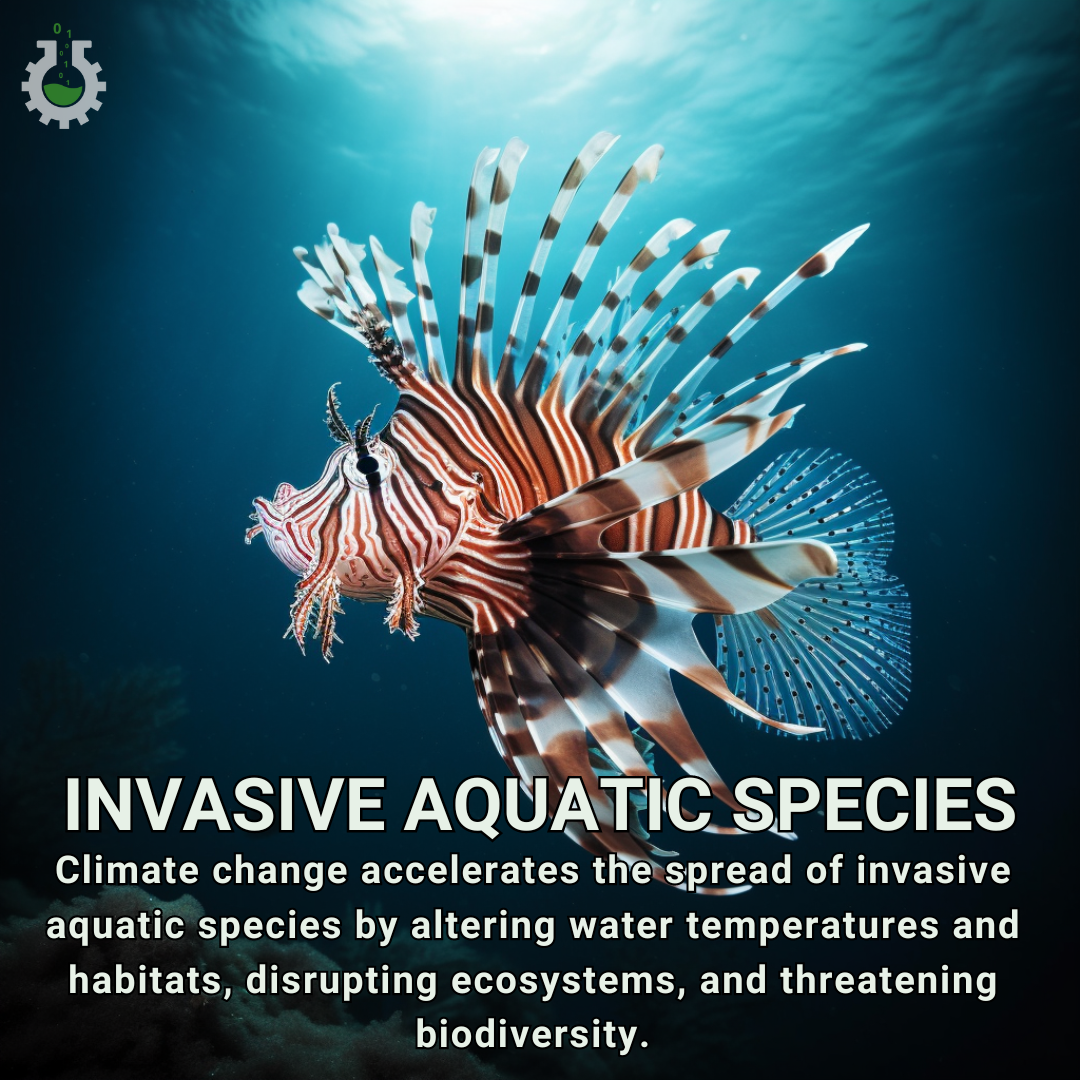May 28, 2024
Climate Change Poster Collection of the Day – Invasive Aquatic Species
Book a Demo
Today’s Climate Change Poster Collection highlights Invasive Aquatic Species. Climate change is increasingly recognized as a significant driver in the spread of invasive aquatic species, posing a substantial threat to biodiversity, ecosystem stability, and human economies. As global temperatures rise, water bodies are experiencing shifts in temperature, salinity, and pH levels, creating environments more conducive to the survival and proliferation of non-native species. Warmer waters can accelerate the metabolism and reproductive rates of these species, allowing them to establish and expand their populations more rapidly. For instance, the zebra mussel, native to Eastern Europe, has spread aggressively in North American waters, clogging water intake pipes, outcompeting native mussels, and causing extensive ecological and economic damage. Similarly, the lionfish, originally from the Indo-Pacific, has invaded the Atlantic Ocean and the Caribbean Sea, preying on native fish populations and destabilizing coral reef ecosystems.
Additionally, altered precipitation patterns and increased frequency of extreme weather events, such as hurricanes and floods, facilitate the dispersal of invasive species across previously impenetrable barriers. These events can transport organisms over long distances, enabling them to colonize new habitats. For example, the Asian carp, which was introduced to the United States for aquaculture purposes, has spread through the Mississippi River system, outcompeting native fish species and threatening the Great Lakes ecosystem. Melting ice caps and glaciers are opening new pathways for species migration, further exacerbating the problem. As the Arctic warms, previously ice-covered regions are becoming accessible, allowing species such as the European green crab to invade new areas and disrupt local marine communities.
The introduction of invasive species disrupts local ecosystems by outcompeting native species for resources, altering food webs, and introducing new diseases. This can lead to the decline or extinction of native species, reducing biodiversity and compromising ecosystem services. For example, the spread of the chytrid fungus, facilitated by climate change, has decimated amphibian populations worldwide, leading to the loss of many species and altering aquatic ecosystems. Economically, the impact is profound, affecting fisheries, aquaculture, and water infrastructure, leading to costly management and mitigation efforts. The invasion of the sea lamprey in the Great Lakes, for example, has caused significant damage to commercial and recreational fisheries, necessitating expensive control measures.
Furthermore, invasive species can compromise water quality, affecting human health and access to clean water. The proliferation of cyanobacteria, or blue-green algae, in warming waters can produce harmful algal blooms that release toxins, posing risks to human and animal health. These blooms can contaminate drinking water supplies, leading to costly treatment processes and public health concerns. Addressing this issue requires a multifaceted approach, including stringent biosecurity measures, early detection and rapid response systems, and international cooperation to manage and mitigate the spread of these species. Preventing the introduction of invasive species through strict regulations on ballast water discharge, aquaculture practices, and the trade of live organisms is crucial. Early detection and rapid response systems can help identify and eradicate invasive species before they become established, reducing the need for costly long-term management.
International cooperation is essential, as invasive species do not recognize political boundaries and can spread across regions and continents. Collaborative efforts, such as the Global Invasive Species Program and regional initiatives like the European Union’s Invasive Alien Species Regulation, are vital for sharing information, resources, and best practices. Public awareness and education are also key components of invasive species management, as informed citizens can play a crucial role in preventing the spread of non-native species through responsible practices such as cleaning boats and gear, not releasing pets into the wild, and reporting sightings of invasive species.
As climate change continues to alter aquatic environments, understanding and addressing its role in the proliferation of invasive species becomes increasingly critical for preserving ecological balance and safeguarding human interests. Research into the interactions between climate change and invasive species dynamics can inform management strategies and help predict future invasions. By integrating climate change adaptation and invasive species management, we can develop more effective and resilient approaches to protecting our aquatic ecosystems and the services they provide.
Discover an inspiring collection of climate change poster.



